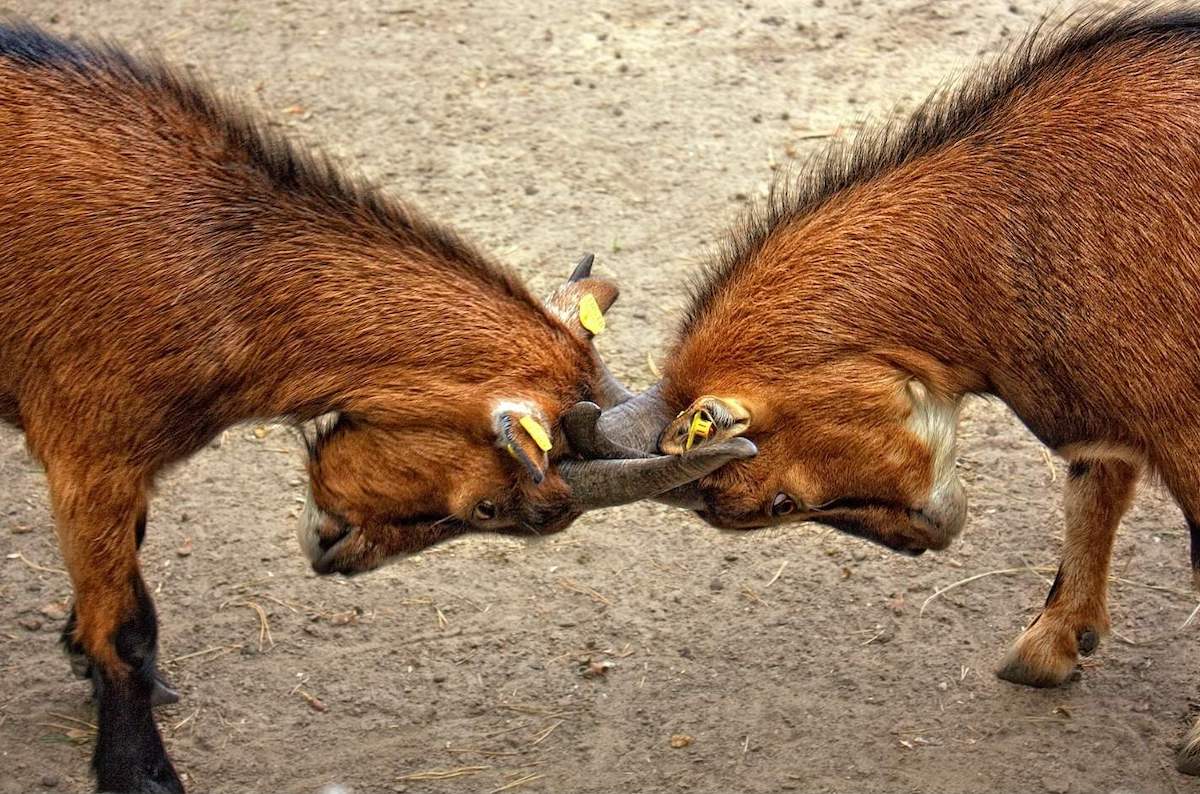When a scholarly/academic paper is produced, the researchers participating in the work must assign a first author and corresponding author. This is a challenging decision and sometimes there’s conflict because the positions can also indicate status (whether real or perceived).
The first author and corresponding author, ideally, are decided during the research and through a mutual agreement among the authors. It’s made based on an understanding of the role and significance of the positions. The author order generally indicates the amount of contribution.
The first author is considered to have contributed more than the second author, and so forth, until reaching the author in the last position. A shared first author (co-first author) or shared corresponding author (co-corresponding author), however, isn’t out of the question.
The last position may also be prestigious – considered the senior author or principal investigator. One of the authors in the list will also be the corresponding author. This means they coordinate the publication process (such as arranging editing and communicating with the journal and with other inquiries) and have their contact information shown upfront in the work.
What you’ll learn in this post
- The differences between first author and corresponding author (and what’s a senior author?).
- How first author and corresponding author are defined.
- How to fairly determine which author(s) will fulfill which role(s).
- When and why the same person might fulfill both roles.
- What you’ll learn in this post
- Determining the author order
- What defines the first author?
- Some of the main duties of a first author are:
- What defines a corresponding author?
- Some of the corresponding author’s main duties are:
- And who is the senior author?
- A few words on guarantors
- Can the first and the corresponding authors be the same person?
- How do you decide who does what role? What are the potential ethical issues?
- References
The order of authors should reasonably correspond to how the authors contributed to the work. It also implies specific credit and responsibilities that go with being in these positions. Working it out over a cup of tea or coffee as soon as possible can help to avoid disputes, and even mediation, later on.
The issue of determining a senior author is also a bit challenging. You need to understand these roles and responsibilities. Don’t just think about who gets the most credit.
Publishing in a scientific journal or any peer-reviewed publication, including preprints and poster presentations, makes research visible to the greater public. It brings discoveries and insights into the eyes of the main experts around the world. This, in turn, builds the author’s reputation as a researcher.
Having a good list of published papers can also help achieve some career goals, such as getting a degree, a promotion or, as a scientist, getting funding to continue with research. The number of first-author papers may also be looked upon as a positive metric.
An “author” (having authorship) of a paper must meet certain criteria for their contributions. The International Committee of Medical Journal Editors (ICJME) guidelinesstate authorship must at least include:
- made substantial contributions to work
- approved the final version
- assumed responsibility and accountability for what is published
However, while the minimum requirements for authorship are generally agreed upon, the credit/responsibility given to a specific author list isn’t so clear. The position on the list can determine the author’s expected duties and show the readers how the author contributed to the work.
So let’s take a deeper look at the definitions of these positions. Hopefully, this will help in your decision-making process. It may in fact affect your future career and status.
Effective English Writing
Get insights from a real journal editor!
This quick handy PDF highlights what to do (and what NOT to do) when writing your research manuscript.
Our experts show you how to write effectively for better readability and faster publication!
Free PDF e-book

What defines the first author?
The first author is usually the person who makes the greatest practical/intellectual contributions to the work.
This person might have co-authors’ assistance with specific tasks, but they are the main responsible one for acquiring and analyzing the data, and for writing the final manuscript.
The first position in the authorship list of a paper is the most attractive one. First authors will have their (last) name mentioned in every future citation of the work, no matter how many other authors there are.
There can also be co-first authors. This is common in projects that require different areas of expertise. It’s also used where it’s hard to figure out who made a larger contribution. Two or even three authors can be listed as equal contributors.
The co-first authors are denoted by an asterisk or other symbol (for example, “Author A*, Author B*, Author C, Author D..”) and a note on the first page.
But even then, the person listed first will continue to be the most visible. This is because of how citations are created. To give equal credit to both first authors, an alternative is to cite the paper as “Author A & Author B et al.”., instead of “Author A et al.”
Some of the main duties of a first author are:
- Make intellectual contributions to the work. Participate in the conception and planning of the study; define aims and trace a methodological approach to achieve them.
- Generate the data. For instance, perform experiments, conduct literature reviews, write programming code, etc.
- Analyze the results. Generate graphs, tables, and illustrations to convey the data, and perform statistical analyses when needed.
- Write and edit the manuscript.
- Help the corresponding author with referees’ queries when the paper is under revision.

What defines a corresponding author?
The corresponding author is responsible for bringing together the manuscript, and for the whole process of submitting it to a journal, up to (hopefully!) final acceptance. Of course, the corresponding author also must meet the academic authorship requirements.
The ICJME defines a corresponding author as someone who takes primary responsibility for communication with the journal during the manuscript submission, peer review, and publication process.
In that sense, the corresponding author is also responsible for ensuring that all the journal’s administrative requirements are fulfilled. This can include providing documents related to ethics committee approval, data and signatures from all authors, and conflict of interest (COI) statements.
In line with this, the Committee on Publication Ethics (COPE) says the corresponding author should be someone willing to fulfill all obligations the journal stipulates (COPE Discussion Document, 2014).
The corresponding author’s contact details are included in the article. This makes them the representative for inquiries about the work. A good corresponding author must therefore be readily available. All communications with journals or readers should be done in a timely way.
English ability is also a big help if you’re the corresponding author and you want to publish in English. You’re usually the person whom I, as the editor, will be communicating with when you choose an editing service.
Some of the corresponding author’s main duties are:
- Certify the manuscript contains all the necessary parts, it is appropriately organized, and it complies with the journal’s requirements. Upload the manuscript and other files.
- Make sure all authors have reviewed and approved the final version of the manuscript before submission. Get signed consent.
- Be in charge of all communications related to the paper. Distribute notifications to all authors (e.g., emails, peer review feedback, decision letters).
- Meet all deadlines, communicate with the authors and editors efficiently, and follow time schedules for publication.
- Ensure all editorial and submission policies are followed.
Note: Although there’s common sense on the main roles of a corresponding author, some of the responsibilities involved can change from one journal to another (e.g., see this list, created by the National Academy of Sciences, with different journals and their respective requirements).
And who is the senior author?
The senior author is the person who provides the intellectual input and helps to design the study and the protocols to be followed. This is especially because they’re experts in that field of research.
They are also sometimes the financial driving force behind the study and generally supervise several projects. For these reasons, they are also known as the “principal investigator.” They usually have broad experience in publishing processes, and their names appear in the last positions of the author list.
Honestly, the senior author is often the lab leader or simply the person in charge. For the work they’ve put into this to date, they earned this honor.
A few words on guarantors
Some journals now ask for one author on a paper to be listed as a guarantor. The guarantor:
- accepts official responsibility for the overall integrity of the manuscript (including ethics, data handling, reporting of results, and study conduct)
- does not act as the primary correspondent for the manuscript
- ensures all statements in the manuscript are true to his knowledge
The guarantor can be the same as the corresponding author, or can be another of the authors.
It’s often recommended that the Principal Investigator or Senior Researcher on a manuscript act as the guarantor as they will be responsible for the study supervision already; however, this is not explicitly required.
Can the first and the corresponding authors be the same person?
Yes, first authors can also be corresponding authors in a manuscript. In fact, it’s quite common.
The main conflict here is when authors equate being a corresponding author with seniority. Senior authors are often viewed as the perfect corresponding authors because of all the qualities they have, as mentioned.
However, as discussed, a corresponding author is charged with communicating with editors and readers only. Journal editors usually see this as an administrative role. Therefore, the corresponding author doesn’t necessarily have to be the seniormost author.
While there’s a special responsibility involved in this role, it’s not supposed to be a mark of distinction. Also, most senior authors will probably have less available time to reply to queries during the submission review process. And they may not have time to respond to reader queries in the future.
So, first authors should be expected to serve as corresponding authors. This is the case as long as they’re consistently involved in the study and know-how to go through the submission/publication process.
This includes deciding on the need for scientific editing if the English needs improving. The role can also help them gain experience in corresponding with journals and general readers.

How do you decide who does what role? What are the potential ethical issues?
Even when the first and corresponding authors aren’t the same person some of their duties can be shared.
While a corresponding author can help the first author, or main author, with data analysis, for example, the first author can help the corresponding author prepare the documents for submission.
The same applies to other authors. Deciding who does what role should be clearly discussed and defined beforehand. Ideally, researchers involved in the study should have regular meetings to clarify responsibilities and update the status of the work. New co-authors may be included and other members may end their involvement along the way. Doing this planning may help prevent conflicts regarding academic authorship and help manage any disputes (Albert & Wager, 2009).
There are many possible reasons for conflict (you can find many examples of real cases on COPE’s website). Disputes around first authorship are more common because this is the most prestigious position and an important measure of productivity. This happens, for example, when two authors both claim they contributed the most. This issue can be solved by proposing co-first authorship, or by using a system to quantify their contributions and then decide who should go first.
There can also be disagreements when the senior author wants to be the first author, or main author. For example, they may need more or higher-impact publications as the first author. Or they wrote the manuscript and believe this entitles them to be the first author.
Disputes on who will be the corresponding author are less likely. That’s because the role, as mentioned, doesn’t have any special distinction other than a visible name and contact. However, some senior authors may still want this role and occasionally there’s some conflict.
Ideally, the corresponding author should be decided among the others. It’s also possible to share the position, have shared corresponding authors; e.g. both the first and senior authors are co-corresponding authors. This may actually work out well if one is available and the other isn’t.
Every participant should feel free to seek clarity throughout the collaboration. Consider having a written document (see this example PDF file on APA)in place as guidance (COPE Discussion Document, 2014;Guidelines on Authorship and Acknowledgement, n.d.).
Before publication, authors should reunite to check the previous responsibilities list and create a final version of the documents. This includes detailed information on the type and extent of the contribution of each person involved. For categories of contributions, see the Contributor Roles Taxonomy [CRediT] website(McNutt et al., 2018). To quantify contributions, different proposed systems can be found in the literature (APA, for example, proposed a scorecard – see theirHelpful Toolsfiles).
As several journals now request and publish information about each author’s contributions, such documents can be essential. This can help in creating standards that will improve transparency in the system of scientific publishing. That, in turn, greatly reduces ethical concerns and authorship disputes.
Our Publication Support team is ready to hear from you if you want to accelerate your path to publication. And explore valuable research services that can help increase your impact and avoid ethical mishaps.
This is a guest post from Adam Goulston, PsyD, MBA, MS, MISD, ELS. Adam runs the Asia-based science marketing and PR company Scize. He has worked as an in-house Senior Language Editor, as well as a manuscript editor, with Edanz.
References
Albert, T., & Wager, E. (2009). How to handle authorship disputes: A guide for new researchers. Committee on Publication Ethics. https://doi.org/10.24318/cope.2018.1.1
COPE Discussion Document: Authorship. (2014). Committee on Publication Ethics. https://doi.org/10.24318/cope.2019.3.3
Guidelines on Authorship and Acknowledgement. (n.d.). Retrieved from https://research.fas.harvard.edu/links/guidelines-authorship-and-acknowledgement
McNutt, M. K., Bradford, M., Drazen, J. M., Hanson, B., Howard, B., Jamieson, K. H., Kiermer, V., Marcus, E., Pope, B. K., Schekman, R., Swaminathan, S., Stang, P. J., & Verma, I. M. (2018). Transparency in authors’ contributions and responsibilities to promote integrity in scientific publication. Proceedings of the National Academy of Sciences, 115(11), 2557-2560. https://doi.org/10.1073/pnas.1715374115




 Latest international science news
Latest international science news

